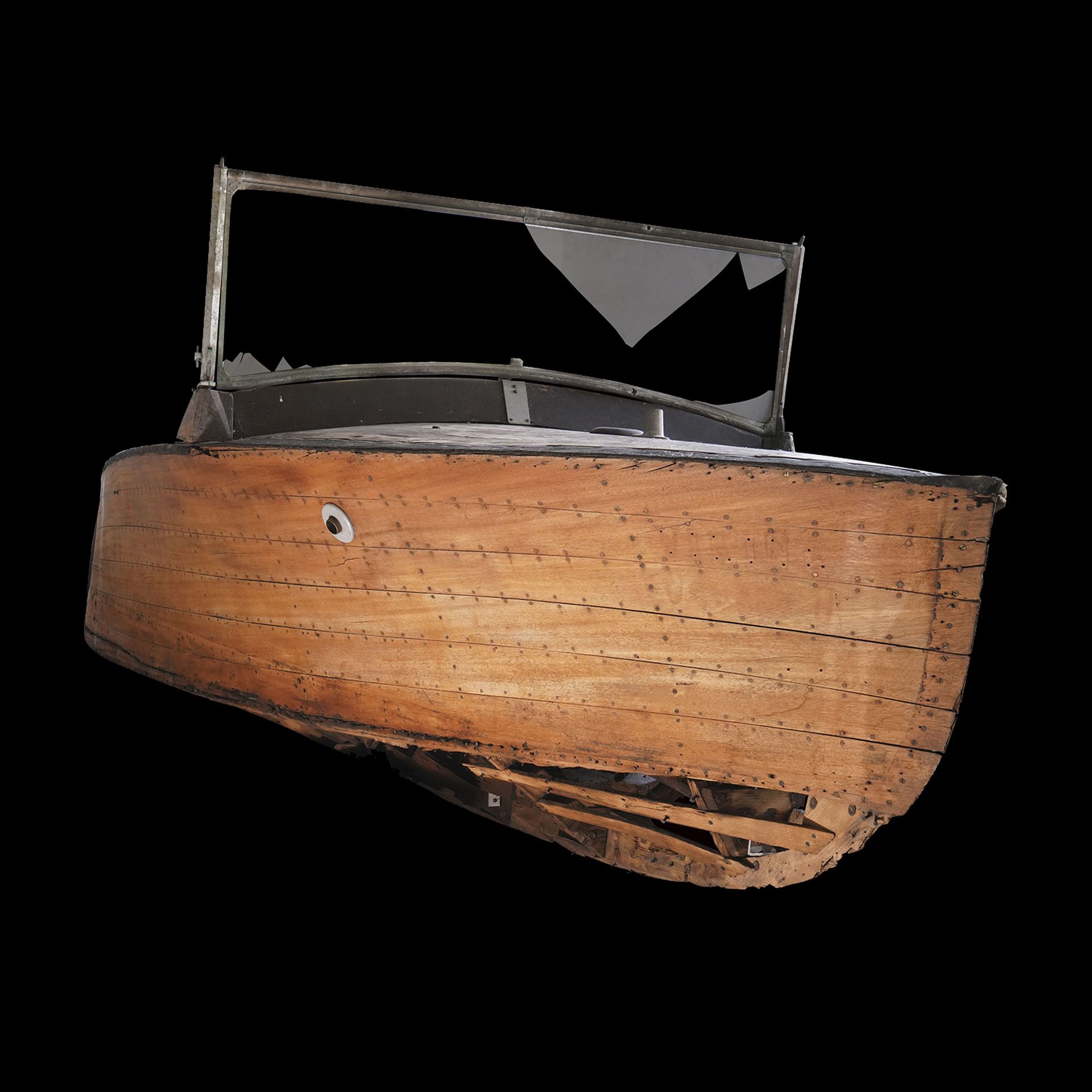Description
circa 1930 CHAUVIÈRE Type : Runabout Length : 5,10 m Width : 1,52 m Weight : n/c Lucien Chauvière (1876-1966) was a French engineer who specialized in glued laminated wood assemblies. He thus became an important pioneer in the construction of aviation propellers by inventing a technique that allowed him to go from the artisanal stage to the industrial scale. During the 1914-1918 war, Chauvière propellers were installed on all types of aircraft. About 100,000 wooden propellers were manufactured by Chauvière during this period, with the Vitry-sur-Seine firm alone equipping a quarter of the Allied armies' needs. We can measure the mastery of this industrialist in his sector by noting that the remaining three quarters came from a list of fifty-five other suppliers. Passionate about aeronautics and speed, Lucien Chauvière also made a prototype airplane and the gyroptère, an original model of an autogyro. His Chauvière-Naval department located in the same workshops produced motorboats and numerous river canoes. It should be noted that the young Domenico Rocca, freshly arrived from his native Italy, did his training as a foreman at Chauvière in the early 1920s before becoming successful after founding the shipyard that bears his name in the same locality. The prestige of Chauvière-Naval is particularly attached to the creation of some famous racing boats, including the famous Rafale series, the V, VI and XI for the industrialist Emile Picquerez, the "king" of lubrication in the 1930s with his firm Tecalemit, omnipresent in all garages and aircraft maintenance workshops. These three exceptional French canoes, super-powerful because they were equipped with Hispano-Suiza V12 aviation engines or a rare Farman V12, are still in existence, restored or not. On the other hand, little is known in detail about Chauvière's motorboat production in the touring boat sector, except that it was mainly made up of outboard canoes whose competition versions were crowned French champions in 1929 and 1930. If several examples of the long production of the Chauvière river canoes are still the joy of collectors, no touring runabout of the brand is known to have survived. Initially found as a wreck with a Citroën 6-cylinder engine, this hull has been stripped of this engine so as not to further weaken its structure and better preserve its originality. This restoration project benefits from the existence of numerous original parts, including the fittings, the imposing windscreen pillar with its tilting mechanism, the steering control unit and an interesting metal cowling.
10
circa 1930 CHAUVIÈRE Type : Runabout Length : 5,10 m Width : 1,52 m Weight : n/c Lucien Chauvière (1876-1966) was a French engineer who specialized in glued laminated wood assemblies. He thus became an important pioneer in the construction of aviation propellers by inventing a technique that allowed him to go from the artisanal stage to the industrial scale. During the 1914-1918 war, Chauvière propellers were installed on all types of aircraft. About 100,000 wooden propellers were manufactured by Chauvière during this period, with the Vitry-sur-Seine firm alone equipping a quarter of the Allied armies' needs. We can measure the mastery of this industrialist in his sector by noting that the remaining three quarters came from a list of fifty-five other suppliers. Passionate about aeronautics and speed, Lucien Chauvière also made a prototype airplane and the gyroptère, an original model of an autogyro. His Chauvière-Naval department located in the same workshops produced motorboats and numerous river canoes. It should be noted that the young Domenico Rocca, freshly arrived from his native Italy, did his training as a foreman at Chauvière in the early 1920s before becoming successful after founding the shipyard that bears his name in the same locality. The prestige of Chauvière-Naval is particularly attached to the creation of some famous racing boats, including the famous Rafale series, the V, VI and XI for the industrialist Emile Picquerez, the "king" of lubrication in the 1930s with his firm Tecalemit, omnipresent in all garages and aircraft maintenance workshops. These three exceptional French canoes, super-powerful because they were equipped with Hispano-Suiza V12 aviation engines or a rare Farman V12, are still in existence, restored or not. On the other hand, little is known in detail about Chauvière's motorboat production in the touring boat sector, except that it was mainly made up of outboard canoes whose competition versions were crowned French champions in 1929 and 1930. If several examples of the long production of the Chauvière river canoes are still the joy of collectors, no touring runabout of the brand is known to have survived. Initially found as a wreck with a Citroën 6-cylinder engine, this hull has been stripped of this engine so as not to further weaken its structure and better preserve its originality. This restoration project benefits from the existence of numerous original parts, including the fittings, the imposing windscreen pillar with its tilting mechanism, the steering control unit and an interesting metal cowling.
